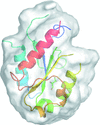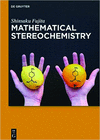issue contents
September 2016 issue

Cover illustration: Miniaturized X-ray beamsplitters based on lithographic waveguide channels [Hoffmann-Urlaub and Salditt (2016). Acta Cryst. A72, 515-522] pave the way to `X-ray optics on a chip'. At the intersection of the resulting beams, intricate phase discontinuities such as that marked by the arrow lead to phase vortices. The scale bar represents 0.1 µm.
advances
research papers
foundations
research papers
 access
accessshort communications
obituaries

book reviews



 journal menu
journal menu



























